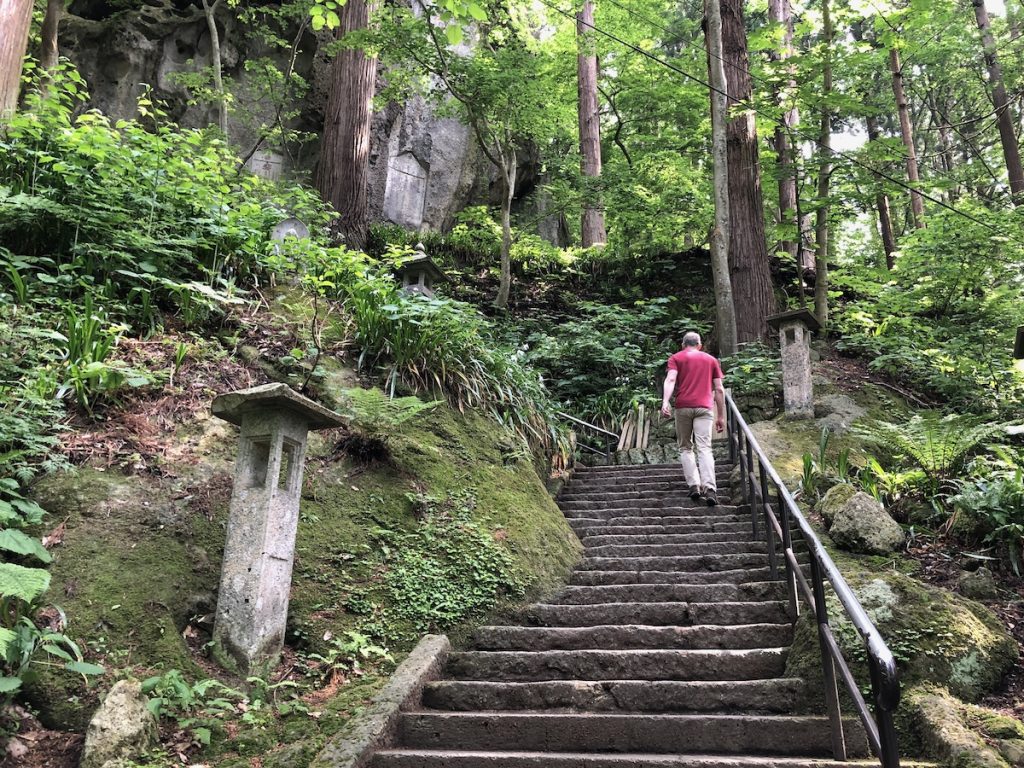
The Yamadera temple complex clings to the slope of Mt. Hoju in Yamagata prefecture, not far from Yamagata City. The site’s official name is Risshakuji Temple. Yamadera (山寺) just means ‘mountain temple’ in Japanese.
When my wife’s brother suggested we tag along on a work trip to this area, I jumped at the chance for a temple visit, followed by an onsen. It was only much later that I found out we’d be leaving at the arse crack of dawn.
We hit the road at 5:15am. Breakfast was truck stop udon and coffee, eaten in a sleep-deprived haze. I’m pretty sure we arrived at the site even before the birds.
Yamadera was founded in 860 AD by a priest called Ennin who had studied in Tang dynasty China before returning to Japan and becoming chief priest of Enryaku-ji on Mt. Hiei, not far from Kyoto. Yamadera was a branch temple of that one, and houses a ritual flame from its parent temple that is said to be still burning since the time of its foundation.
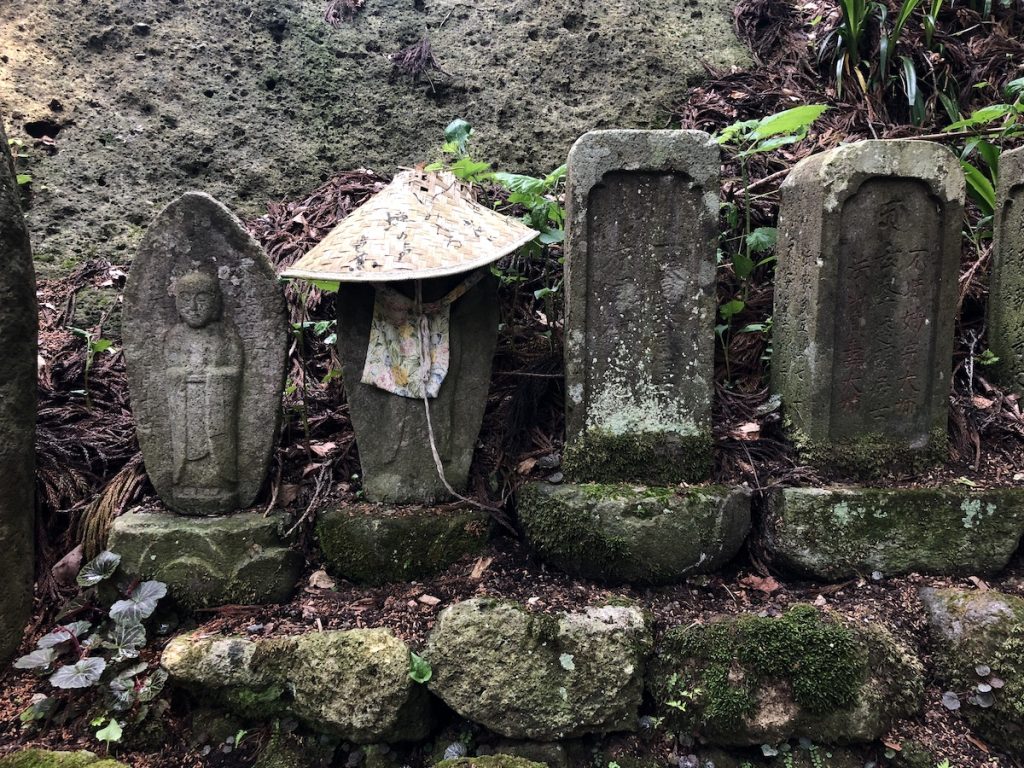
Yamadera became a major centre of Buddhism in the Heian period (794 – 1185), in what was then Dewa province, now Yamagata and Akita prefectures.
It was later patronized by the Kamakura shoguns, and was converted to Zen Buddhism around the middle of the 13th century.
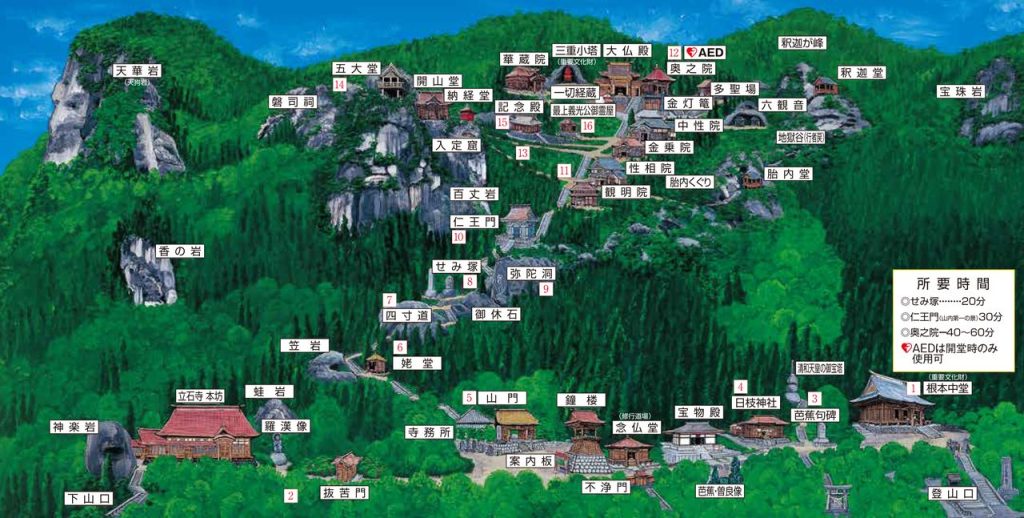
It also pops up in literature. The poet Bassho stopped here in 1689 on his Narrow Road to the Deep North journey. The result, of course, was a haiku:
閑けさや
岩にしみいる
蝉の声
Or in romaji:
Shizukesa ya
Iwa ni shimiiru
Semi no koe
And English:
Ah, the quiet
But piercing the rocks
the cry of the cicada
You can read an analysis of the poem here, where I found this translation. While you’re busy with that, I’ll go upstairs: around 1,000 of them, in fact.
I’ve never been a morning person, except when camping or on long hikes. But the advantage of being up so early is that the temple hillside was nearly deserted when we climbed up.
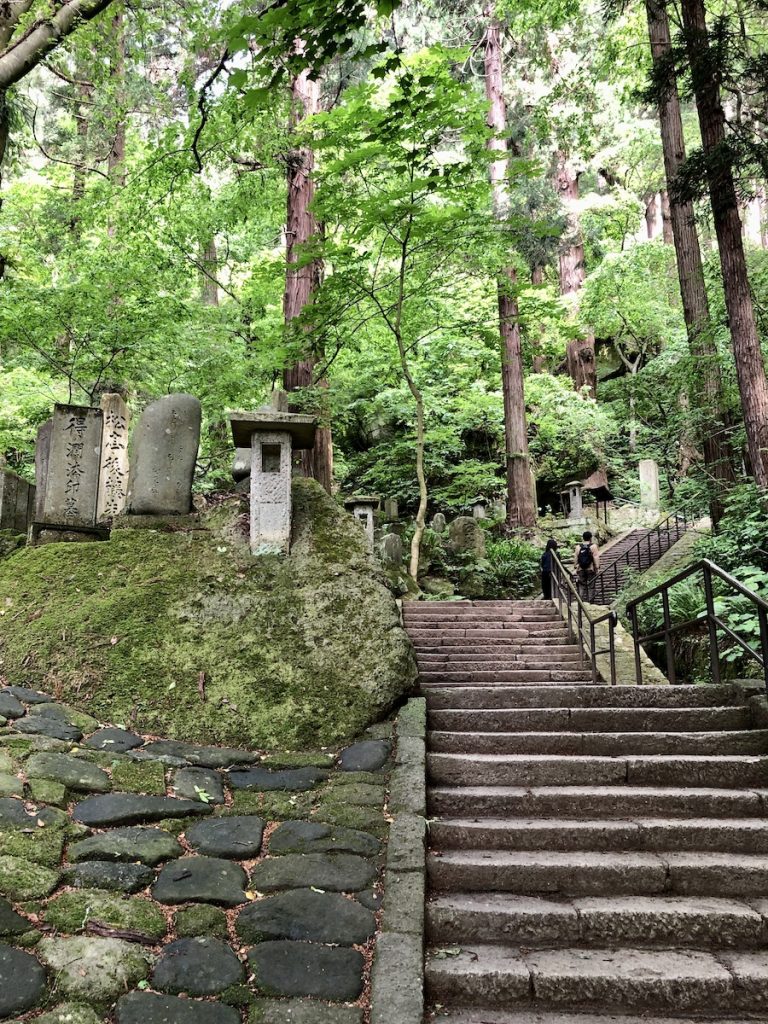
The upper reaches are accessed by a flight of stone steps that wind up the mountainside through a cedar forest, past stone lanterns, carved Buddhist figures, and assorted other shrines.
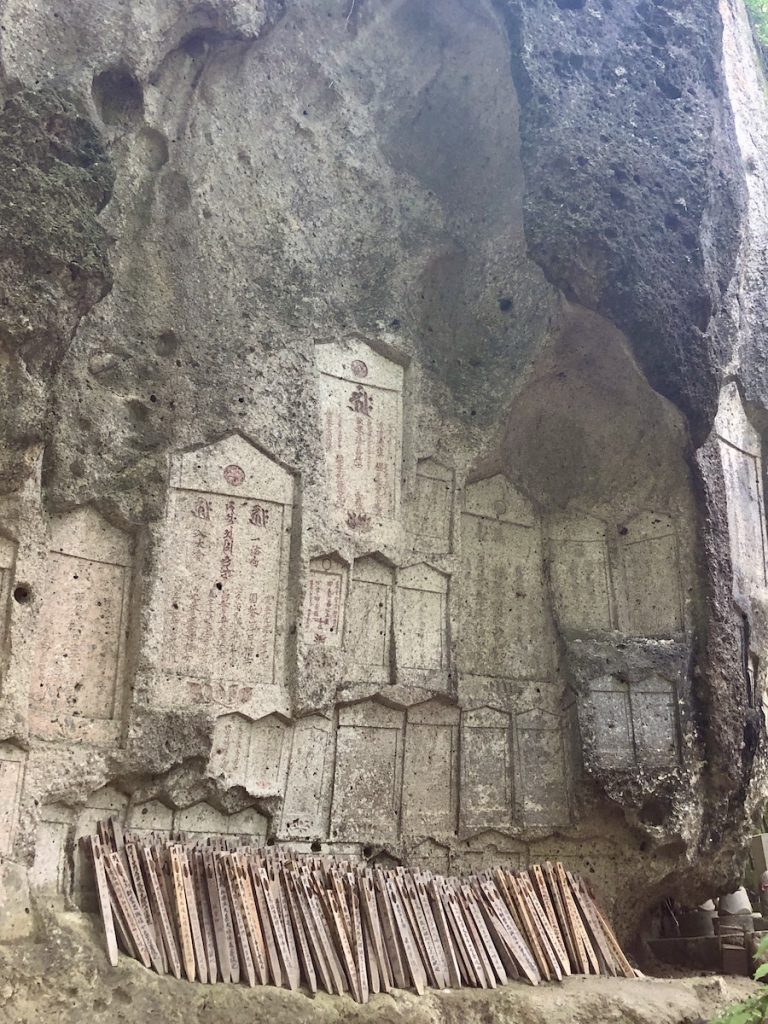
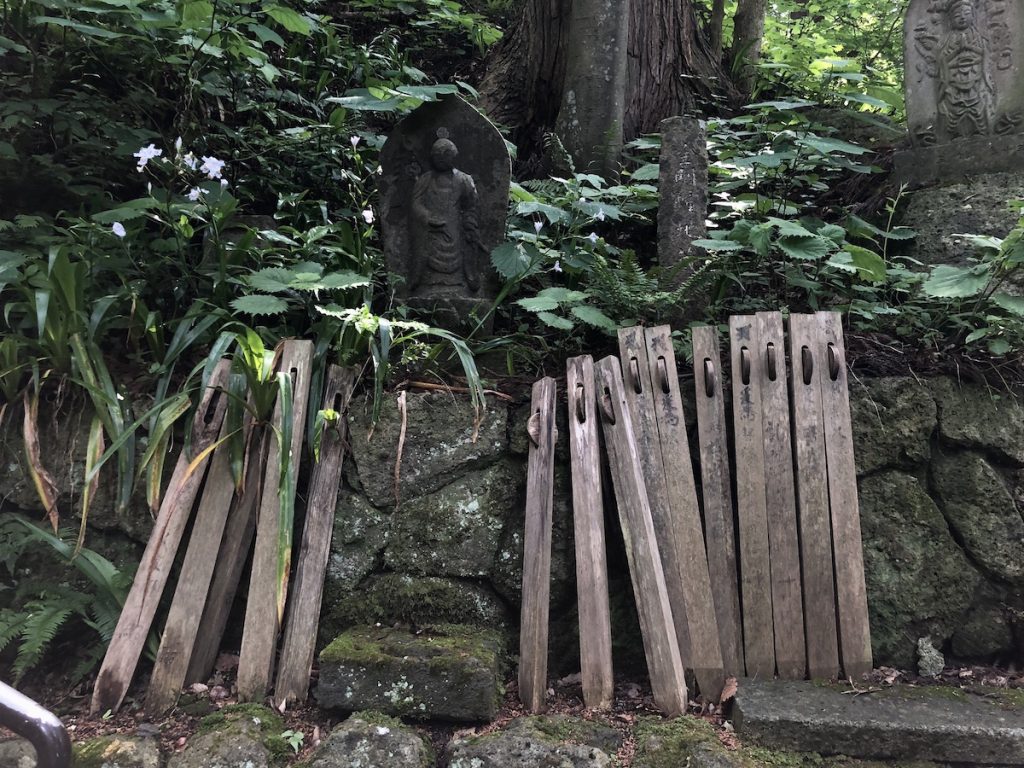
The carved wooden Niomon gate gives access to the upper precincts, where temple buildings cluster the slope, including the Okunoin (The Great Buddha Hall), home to a five metre tall statue.
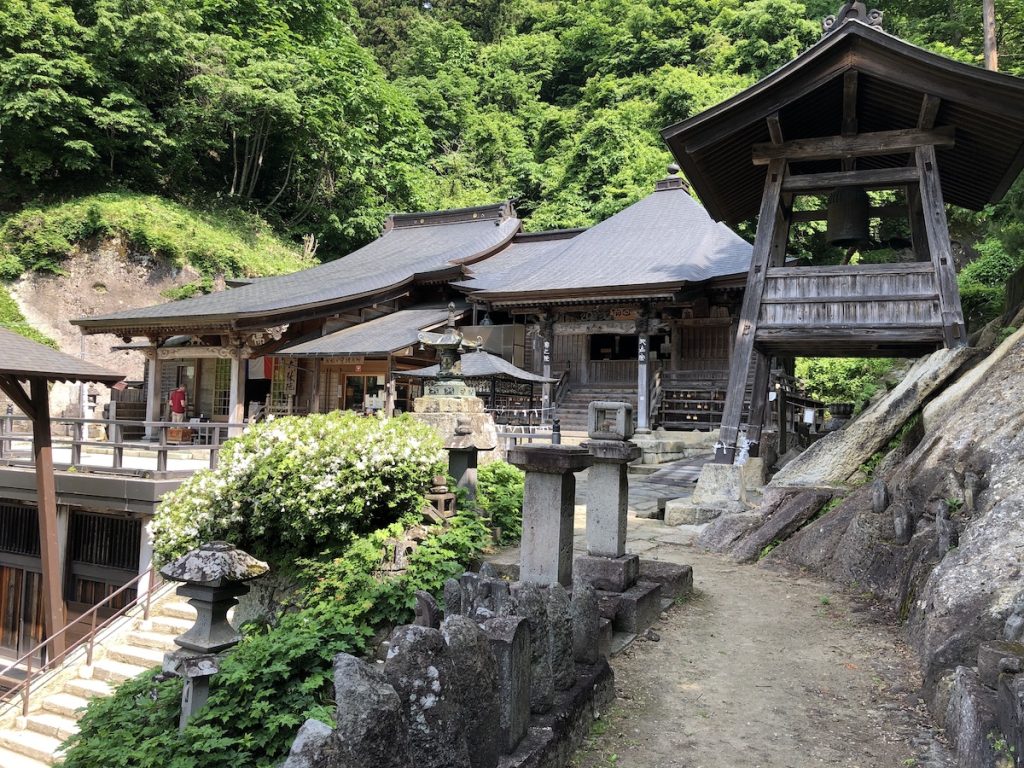
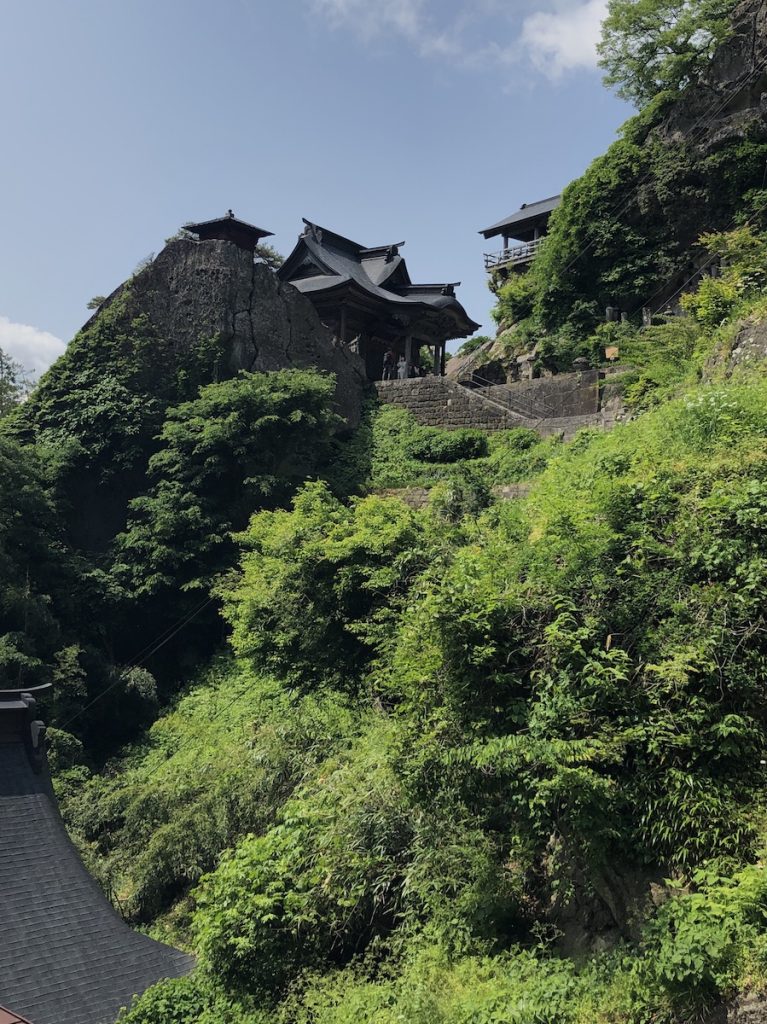
Not far down the hill from this pinnacle of aspiring enlightenment, an open-sided wooden structure called the Godaidō sticks out from the cliff, offering views of the valley below.
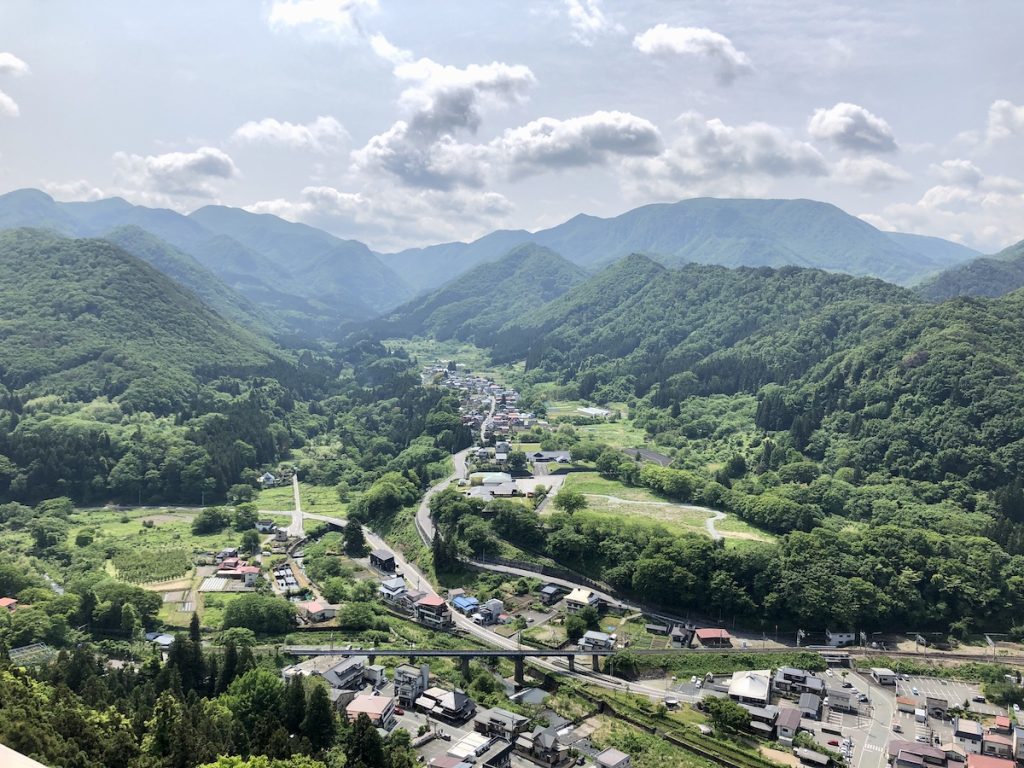
We also had excellent views of a dog in a costume. His arm-gauntlet-clad masked owner was busy taking portraits of the weary creature as the overheated canine did his best to beg for water.
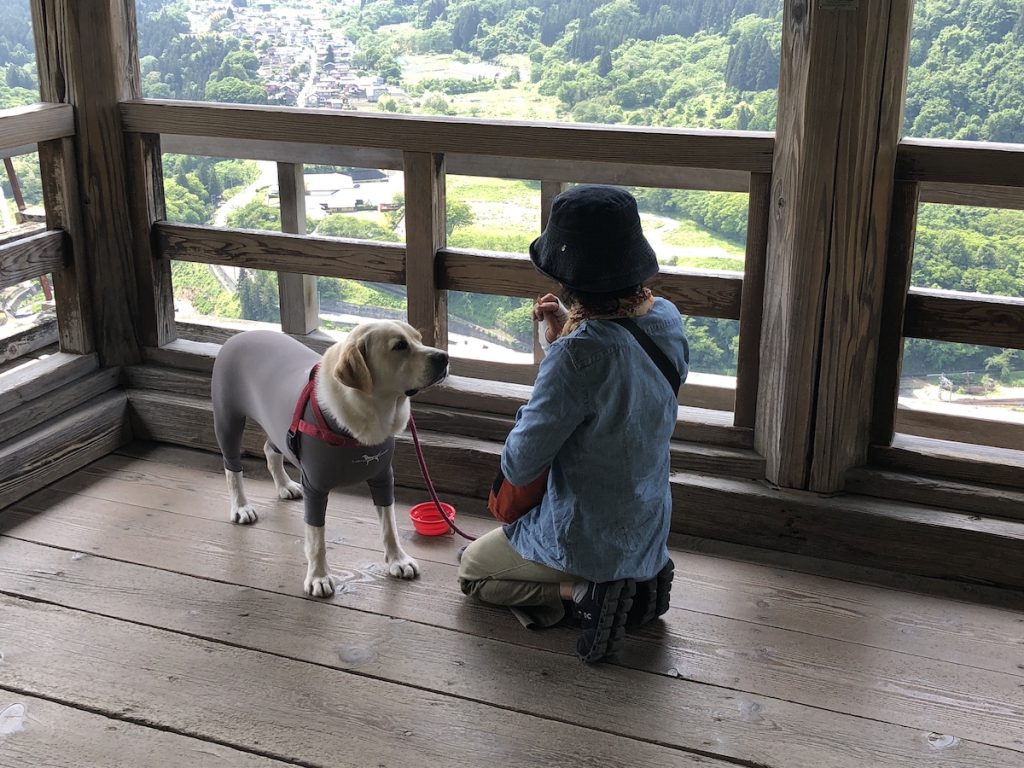
Unlike the dog, I was close to begging for ice cream. And so we trudged back down the stone steps to the valley below, where a cluster of shops offered local treats, including skewers of ball-shaped konnyaku, and sakura (cherry) soft serve cones.
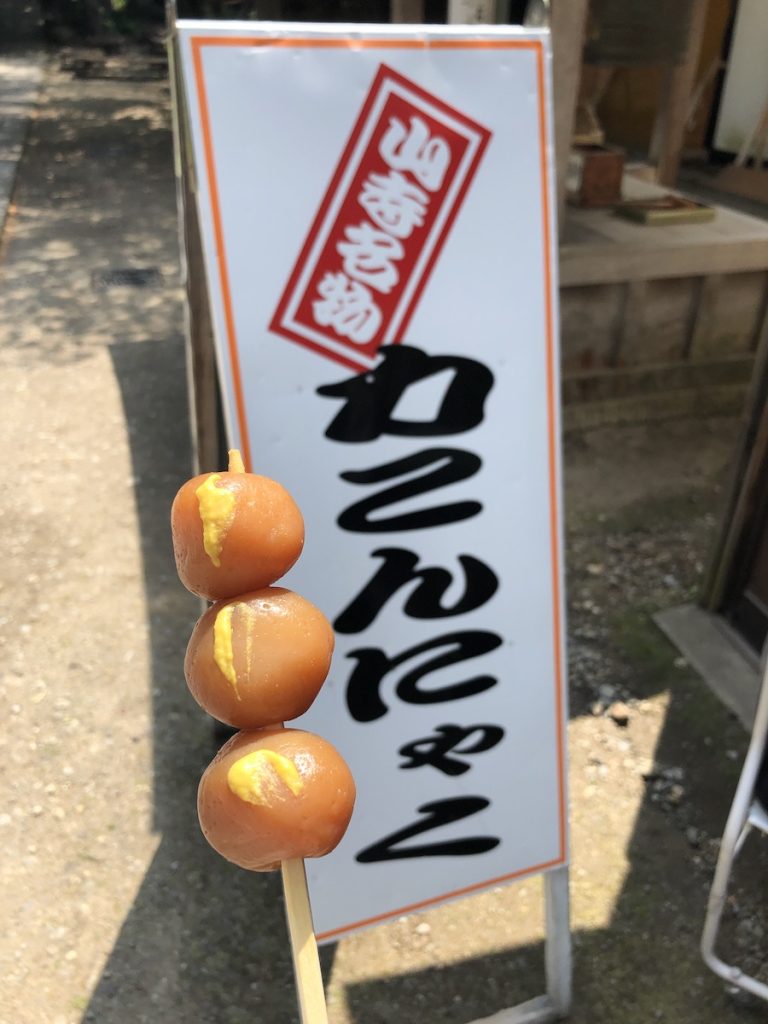
Photos ©Tomoko Goto 2023
